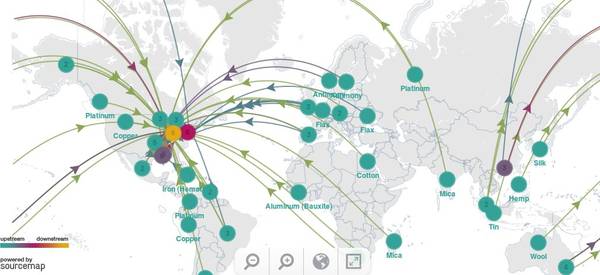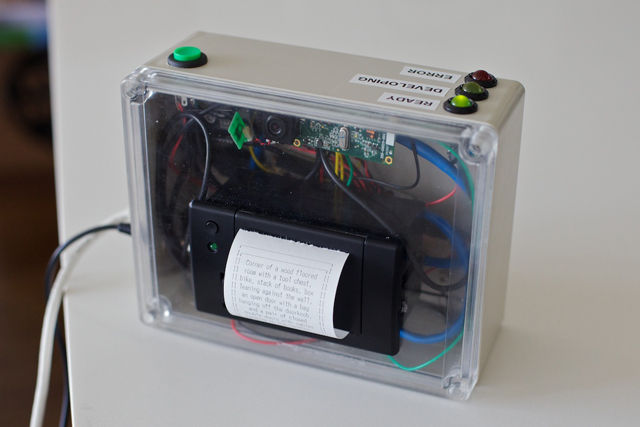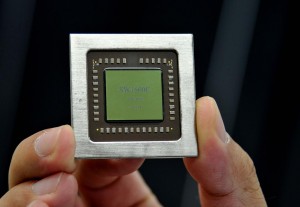Friday, May 11. 2012
The Cloud Storage Showdown – Dropbox, Google Drive, SkyDrive & More
Via makeuseof
-----
The cloud storage scene has heated up recently, with a long-awaited entry by Google and a revamped SkyDrive from Microsoft. Dropbox has gone unchallenged by the major players for a long time, but that’s changed – both Google and Microsoft are now challenging Dropbox on its own turf, and all three services have their own compelling features. One thing’s for sure – Dropbox is no longer the one-size-fits-all solution.
These three aren’t the only cloud storage services – the cloud storage arena is full of services with different features and priorities, including privacy-protecting encryption and the ability to synchronize any folder on your system.
Dropbox
Dropbox introduced cloud storage to the masses, with its simple approach to cloud storage and synchronization – a single magic folder that follows you everywhere. Dropbox deserves credit for being a pioneer in this space and the new Google Drive and SkyDrive both build on the foundation that Dropbox laid.
Dropbox doesn’t have strong integration with any ecosystems – which can be a good thing, as it is an ecosystem-agnostic approach that isn’t tied to Google, Microsoft, Apple, or any other company’s platform.

Dropbox today is a compelling and mature offering supporting a wide variety of platforms. Dropbox offers less free storage than the other services (unless you get involved in their referral scheme) and its prices are significantly higher than those of competing services – for example, an extra 100GB is four times more expensive with Dropbox compared to Google Drive.
- Supported Platforms: Windows, Mac, Linux, Android, iOS, Blackberry, Web.
- Free Storage: 2 GB (up to 16 GB with referrals).
- Price for Additional Storage: 50 GB for $10/month, 100 GB for $20/month.
- File Size Limit: Unlimited.
- Standout Features: the Public folder is an easy way to share files. Other services allow you to share files, but it isn’t quite as easy. You can sync files from other computers running Dropbox over the local network, speeding up transfers and taking a load off your Internet connection.

Google Drive
Google Drive is the evolution of Google Docs, which already allowed you to upload any file – Google Drive bumps the storage space up from 1 GB to 5 GB, offers desktop sync clients, and provides a new web interface and APIs for web app developers.
Google Drive is a serious entry from Google, not just an afterthought like the upload-any-file option was in Google Docs.

Its integration with third-party web apps – you can install apps and associate them with file types in Google Drive – shows Google’s vision of Google Drive being a web-based hard drive that eventually replaces the need for desktop sync clients entirely.
- Supported Platforms: Windows, Mac, Android, Web, iOS (coming soon), Linux (coming soon).
- Free Storage: 5 GB.
- Price for Additional Storage: 25 GB for $2.49/month, 100 GB for $4.99/month.
- File Size Limit: 10 GB.
- Standout Features: Deep search with automatic OCR and image recognition, web interface that can launch files directly in third-party web apps.

You can actually purchase up to 16 TB of storage space with Google Drive – for $800/month!
SkyDrive
Microsoft released a revamped SkyDrive the day before Google Drive launched, but Google Drive stole its thunder. Nevertheless, SkyDrive is now a compelling product, particularly for people into Microsoft’s ecosystem of Office web apps, Windows Phone, and Windows 8, where it’s built into Metro by default.
Like Google with Google Drive, Microsoft’s new SkyDrive product imitates the magic folder pioneered by Dropbox.

Microsoft offers the most free storage space at 7 GB – although this is down from the original 25 GB. Microsoft also offers good prices for additional storage.
- Supported Platforms: Windows, Mac, Windows Phone, iOS, Web.
- Free Storage: 7 GB.
- Price for Additional Storage: 20 GB for $10/year, 50 GB for $25/year, 100 GB for $50/year
- File Size Limit: 2 GB
- Standout Features: Ability to fetch unsynced files from outside the synced folders on connected PCs, if they’ve been left on.

Other Services
SugarSync is a popular alternative to Dropbox. It offers a free 5 GB of storage and it lets you choose the folders you want to synchronize – a feature missing in the above services, although you can use some tricks to synchronize other folders. SugarSync also has clients for mobile platforms that don’t get a lot of love, including Symbian, Windows Mobile, and Blackberry (Dropbox also has a Blackberry client).

Amazon also offers their own cloud storage service, known as Amazon Cloud Drive. There’s one big problem, though – there’s no official desktop sync client. Expect Amazon to launch their own desktop sync program if they’re serious about competing in this space. If you really want to use Amazon Cloud Drive, you can use a third-party application to access it from your desktop.

Box is popular, but its 25 MB file size limit is extremely low. It also offers no desktop sync client (except for businesses). While Box may be a good fit for the enterprise, it can’t stand toe-to-toe with the other services here for consumer cloud storage and syncing.
If you’re worried about the privacy of your data, you can use an encrypted service, such as SpiderOak or Wuala, instead. Or, if you prefer one of these services, use an app like BoxCryptor to encrypt files and store them on any cloud storage service.
Thursday, May 10. 2012
Wolfenstein on the Web
Via Christian Babski
-----

Remember your first time being sick in front of a screen!
Artifical leaves could charge your phone
Via Slash Gear
-----
Green plants use photosynthesis to convert water and sunlight into energy used to help the plant grow. Scientists have created the first practical artificial leaf that mimics the natural process and holds promise for sustainable green energy. The key to this practical artificial leaf is that unlike earlier devices it doesn’t use expensive components in its construction.

The new artificial leaf is made from inexpensive materials and uses low-cost engineering and manufacturing processes making it much more practical. The artificial leaf has an component to collect sunlight sandwich between two films that generate oxygen and hydrogen gas. When the artificial leaf is placed into a jar of water and placed in sunlight, it bubbles, releasing hydrogen that can be used by fuel cells to make electricity. Previous designs needed expensive materials like platinum along with expensive manufacturing processes.
The new artificial leaf replaces the costly platinum with a less expensive nickel-molybdenum-zinc compound. The opposite side of the leaf has a cobalt film that generates oxygen gas. The hope is that this sort of device can be used to generate electricity for remote places that are off the electrical grid. The tech could also be used to power all sorts of devices including phones and more.
“Considering that it is the 6 billion nonlegacy users that are driving the enormous increase in energy demand by midcentury, a research target of delivering solar energy to the poor with discoveries such as the artificial leaf provides global society its most direct path to a sustainable energy future,” he says.
Wednesday, May 09. 2012
Mona Lisa’s True Identity?
Via Christian Babski
-----

Some researchers are about to try to run facial recognition algorythm on Mona Lisa painting in order to try to know who is she... but do we really want to know?
Monday, May 07. 2012
Sourcemap: visualizing supply-chains for the goods in our lives
Via BoingBoing
-----

Sourcemap shows supply-chain maps that reveal all the places in the
world that feed into the common goods we consume in our lives. The
service's about page
implies that the supply-chain data comes from companies themselves, but
there's a lot of what seem to be user-generated maps like this complex map labelled "Laptop Computer". It's a tantalizing set of maps, but I wish there was more information on the data-sources that went into each map.
On the other hand, I'm loving this reconstruction of Western Electric's 1927 telephone manufacturing supply chain by Matthew Hockenberry, who added this information: "This is a reconstruction of the supply chain for the Western Electric produced 'candlestick' style telephones of the late 1920s. Information is largely drawn from archival Western Electric/AT&T materials, as well as those of supplier companies. Some imagery is currently included for cotton and copper sources. This is a rough draft - many details are missing or incomplete."
Friday, May 04. 2012
China plans national, unified CPU architecture
Via Extreme Tech
-----
According to reports from various industry sources, the Chinese government has begun the process of picking a national computer chip instruction set architecture (ISA). This ISA would have to be used for any projects backed with government money — which, in a communist country such as China, is a fairly long list of public and private enterprises and institutions, including China Mobile, the largest wireless carrier in the world. The primary reason for this move is to lessen China’s reliance on western intellectual property.
There are at least five existing ISAs on the table for consideration — MIPS, Alpha, ARM, Power, and the homegrown UPU — but the Chinese leadership has also mooted the idea of defining an entirely new architecture. The first meeting to decide on a nationwide ISA, attended by government officials and representatives from academic groups and companies such as Huawei and ZTE, was held in March. According to MIPS vice president Robert Bismuth, a final decision will be made in “a matter of months.”
China has a long history with MIPS and Alpha. Loongson processors, which power millions of Chinese school computers, use MIPS — and the ShenWei processors (pictured right) found in China’s first homegrown supercomputer, the Sunway Bluelight MPP, are based on the Alpha ISA. MIPS Technologies (the company) hasn’t been doing very well recently, and it’s rumored that the Sunnyvale-based company could be up for sale — a purchase I’m sure the Chinese government could afford.
According to EE Times, there are some 34 ARM licensees in China, but at $5 million for a single Cortex-A9 core license, it’s unlikely that ARM will be China’s choice. The Power ISA is cheaper, but lacks the software ecosystems that ARM and MIPS enjoy. ShenWei/Alpha is also a possibility, but again it cannot compete with MIPS’ installed base.
The other option, of course, is developing a brand new ISA — a daunting task, considering you have to create an entire software (compiler, developer, apps) and hardware (CPU, chipset, motherboard) ecosystem from scratch. But, there are benefits to building your own CPU architecture. China, for example, could design an ISA (or microarchicture) with silicon-level monitoring and censorship — and, of course, a ubiquitous, always-open backdoor that can be used by Chinese intelligence agencies. The Great Firewall of China is fairly easy to circumvent — but what if China built a DNS and IP address blacklist into the hardware itself?
Taking a leaf out of South Korea’s hardcore gaming scene, what if the Chinese government decided to implement a hardware-level 10pm curfew for video games? Or some code that automatically turns negative mentions of Hu Jintao (the Chinese president) into positives, and inserts a few honorifics at the same time. Or a latent botnet of hundreds of millions of computers that can be activated upon the commencement of World War III. Or, or, or…
Wednesday, May 02. 2012
The state of responsive advertising: the publishers' perspective
Via Christian Babski
-----

The Internet is about (if it is not already a terminated task!) to become a pretty classical media. Country's boundaries were raised up on the net, making unavailable some contents depending on the world region you are browsing from (pretty weird, middle-age based concept of what the Internet must be)... We are now heavily targeted by many advertisements all around contents we are trying to access from the Web, pop-up blockers are now totally useless as advertisements took fairly advantage of HTML evolution. It is more and more difficult to ignore these advertisements, and even by closing them, one already produces/gives an information to Big Brother. There is less and less ways to escape, and by reading the following article, it looks like we are not supposed to escape... by the way.
Responsive Advertising article
The opportunity to set up an alternative network (satellite based?) may be the only way to get a new [commercially virgin] web... Let's call it The Veb... underlying the need of a step back from where we are nowadays.
Tuesday, May 01. 2012
HomeOS: Enabling smarter homes for everyone
Via Christian Babski
-----

It looks like that Microsoft is about to propose the access to an operating system design to control your... home. The prototype seems to be accessible freely for non-commercial use.
Here is the abstract and a direct link to the research program's web page:
It is no secret that homes are ever-increasing hotbeds of new technology such as set-top boxes, game consoles, wireless routers, home automation devices, tablets, smart phones, and security cameras. This innovation is breeding heterogeneity and complexity that frustrates even technically-savvy users’ attempts to improve day-to-day life by implementing functionality that uses these devices in combination. For instance, it is impossible for most users to view video captured by their security camera on their smartphone when they are not at home. Heterogeneity across devices and across homes also makes it difficult to develop applications that solve these problems in a way that work across a range of homes.
To simplify the management of technology and to simplify the development of applications in the home, we are developing an "operating system" for the home. HomeOS provides a centralized, holistic control of devices in the home. It provides to users intuitive controls to manage their devices. It provided to developers high-level abstractions to orchestrate the devices in the home. HomeOS is coupled with a HomeStore through which users can easily add obtain applications that are compatible with devices in their homes and obtain any additional devices that are needed to enable desired applications.
Friday, April 27. 2012
Why the iPad Has to be Made in China
Via ifixit.org
-----
The iPad’s light, sleek, simple construction belies its complex origins. There’s a lot of stuff in the iPad: aluminum and glass, of course, but also other heavy metals and toxic chemicals. And manufacturing each 1.44-pound iPad results in over 285 times its own weight in greenhouse gas emissions. The manufacturing of and material used in the iPad are two reasons why the iPad must be made in China—and not just in the ways you’d expect.
Yes, labor is dirt cheap in China. Minimum wage was just $138/month at Hongkai Electronics in October 2010, compared to $1160/month in the US (based on a $7.25/hour federal minimum wage and a 40-hour work week).
And yes, environmental regulations in China are pretty minimal (though improving). China ranks 116th out of 132 countries on Yale’s 2012 Environmental Performance Index rankings. Even with all their illegally run coltan mines, the Democratic Republic of Congo is ranked many points higher than China.
But there’s another important reason why Apple and other manufacturers have their heels stuck in Chinese mud. iPad manufacturing, like the manufacturing of other electronics, requires a significant amount of rare earth elements, the 17 difficult-to-mine elements used in all kinds of green technology. It’s hard to say exactly what rare earths are in an iPad, since Apple is really tight-lipped about their materials—no one can even get them to confirm what manufacturer makes their impact-resistant glass, though I suspect Asahi.
Cambridge engineering professor Dr. Tim Coombs guesses that there may be lanthanum in the iPad’s lithium-ion polymer battery, as well as “a range of rare earths to produce the different colours” in the display. The magnets along the side of the iPad and in its cover (pictured above) are possibly a neodymium alloy. Electronics glass is often polished with cerium oxide. According to a Congressional Research Service report, worldwide demand for rare earths was 136,100 tons in 2010, 45-percent of which was for magnets, glass, and polishing.
All Our Rare Earths Come from a Pit Mine in China
Why is all this rare earth consumption a problem? China currently controls 95-97% of the world’s supply of rare earths and has repeatedly cut export quotas, sending already-high prices skyrocketing. Fearing dependence on China for rare earths, two companies—Molycorp in California and Lynas Corp in Australia—plan to begin mining rare earths this year. As green industry continues to grow, however, it’s unclear if current mining operations will be able to keep up with increasing demand.
Facing growing concern about the possibility of a rare earth shortage, President Obama recently lodged a complaint with the World Trade Organization against China about their rare earth policy. Some specialists think the complaint may be “too little, too late”—by the time China changes its policy, more manufacturers will have moved plants to China.
Recycling is Not a Rare Earth Solution
It might seem that the mountains of electronic waste would be a perfect source of rare earths. But recycling isn’t the answer to the rare earth shortage—at least not yet. Some Japanese recyclers are successfully recovering rare earths from compressors. But neither SIMS Recycling Solutions nor Electronics Recyclers International (ERI), the two biggest electronics recyclers in the US, are currently recovering any rare earths in their recycling process, according to SIMS president Steve Skurnac and ERI CEO John Shegerian.
For now, Skurnac says, “Rare earths come in very minute concentrations in electronic scrap,” which means that recyclers need high volume and super efficient processes to recover any reasonable amount of rare earths from electronics. The technology just isn’t there to make it economically feasible for most recyclers.
Today, an American electronics company can only be exempt from China’s rare earth export quotas by manufacturing within China. So that’s what most companies, including Apple, are doing. The only other solution is for us to stop consuming so much—an option that people rarely find appealing. Not as appealing as a retina display, at least.
Thursday, April 26. 2012
The Descriptive Camera turns your photos into someone else's words
Via The Verge
-----

While most camera innovations are aimed at higher megapixel counts or new image capturing techniques, Matt Richardson is taking an entirely different route with the Descriptive Camera: creating a device that turns your captured imagery into words. Designed as part of a class for New York University's Interactive Telecommunications Program, the camera consists of a USB webcam, a shutter button, a small thermal printer, and an ethernet connection. When a picture is "snapped," it's sent off to humans for analysis via Amazon's Mechanical Turk API. The human on the other end then creates a written description of the image, which is sent back to the camera. The resulting text is printed with the thermal printer, framed by a Polaroid-style photo outline (an example Richardson provides reads "It's a dark room with a window. The image is quite pixelated."
According to Richardson's post about the project, the Amazon Human Intelligence Task — or HIT — cost is about $1.25 for each image, with results usually taking between three to six minutes to return. An "accomplice mode" actually lets the camera send out links to the image via instant messenger, providing a cheaper option for human interpretation. While the device currently requires external power from a 5-volt source, Richardson does hope to make a version at some point that runs off self-contained batteries and can use wireless data. It's certainly an interesting project, and we won't deny that we're smitten with the idea of taking images out and about in the world, and seeing them perceived through someone else's eyes.
Quicksearch
Popular Entries
- The great Ars Android interface shootout (130697)
- Norton cyber crime study offers striking revenue loss statistics (100975)
- MeCam $49 flying camera concept follows you around, streams video to your phone (99706)
- Norton cyber crime study offers striking revenue loss statistics (57204)
- The PC inside your phone: A guide to the system-on-a-chip (56996)
Categories
Show tagged entries
Syndicate This Blog
Calendar
|
|
December '25 | |||||
| Mon | Tue | Wed | Thu | Fri | Sat | Sun |
| 1 | 2 | 3 | 4 | 5 | 6 | 7 |
| 8 | 9 | 10 | 11 | 12 | 13 | 14 |
| 15 | 16 | 17 | 18 | 19 | 20 | 21 |
| 22 | 23 | 24 | 25 | 26 | 27 | 28 |
| 29 | 30 | 31 | ||||

